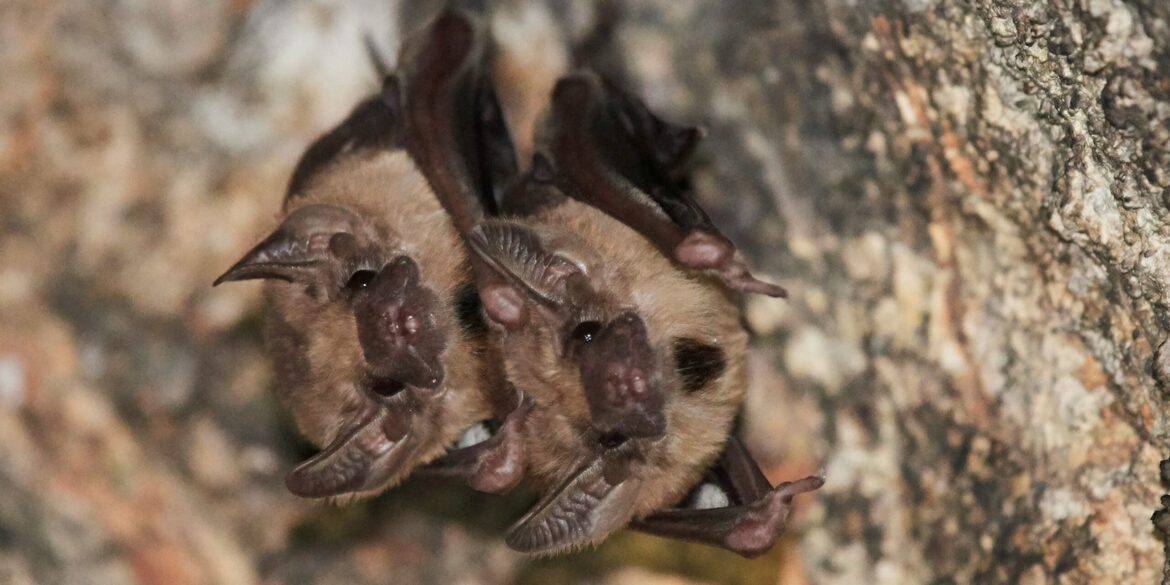Researchers have unveiled a fascinating new twist in the hunting repertoire of the tropical so‑called “fringe‑lipped” bat ( Fringe‑lipped Bat, Trachops cirrhosus), showing that these bats may deploy a “hang‑and‑wait” ambush strategy somewhat analogous to small‑scale lion‑style tactics. According to the team’s report, which draws on high‑tech biologging sensors, individual bats will perch motionless in their rainforest habitat and conserve energy until prey passes within striking distance; at that point they launch a swift and precise attack.
Located in Panama’s tropical forests, the Fringe‑lipped Bat has long been known to exploit an unusual predatory technique: listening for the mating calls of frogs and toads and then swooping in on the unsuspecting amphibian. Past work has shown they are skilled at eavesdropping on vocal prey, distinguishing, for example, calls of edible versus toxic species by learned experience. But this newly documented “hang‑and‑wait” strategy adds an additional layer of complexity to their behaviour, indicating that their ambush‑style hunting may be more sophisticated and varied than previously assumed.
The researchers used miniature biologging devices attached to wild bats, which recorded movement, acceleration and sound, enabling the extraction of fine‑scale behaviour patterns. Their analyses revealed that the bats sometimes remained perfectly still for extended periods, perched on vegetation, until a prey call or movement brought the target within attack range. Once the prey was in proximity, the bat launched a rapid, directed strike, minimizing its flight time and energy expenditure. This method contrasts with the more widely documented aerial hawking or active searching behaviour found in many insectivorous bats, and points toward a more patient, ambush‑style mode of predation.
From an ecological perspective, this discovery has several important implications. First, it expands our understanding of the diversity of predatory behaviours among bats, a group traditionally viewed as largely opportunistic aerial hunters. The finding suggests that some bat species are capable of deploying sit‑and‑wait tactics, integrating acoustic eavesdropping with perching ambushes, increasing their versatility in hunting strategy. Second, it challenges assumptions about how nocturnal predator‑prey dynamics operate in tropical ecosystems. If ambush strategies are more prevalent than recognized, the vulnerability of prey species (such as frogs and toads) may be higher than previously accounted for, which could have knock‑on effects for amphibian conservation and forest ecosystem dynamics.
The conservation community and ecologists believe the behaviour may influence how we design management strategies for both bats and their prey. Because the Fringe‑lipped Bat locates prey by sound, and mixes ambush tactics with acoustic listening, habitat alterations that affect perch availability or sound propagation (for instance, the removal of understory vegetation or noise pollution) may impact their hunting success and thus their role in the ecosystem. Understanding nuances such as perching behaviour or “hang‑and‑wait” tactics helps in crafting preservation plans that take into account the micro‑habitat structures required for these night‑time hunters.
It is important to be cautious: the published evidence so far derives from a relatively small sample of individuals and a limited geographic range, so the authors themselves note that more research is needed to assess how widespread this behaviour is among fringe‑lipped bats, other bat species, and different environmental contexts. The sensors provided compelling glimpses into the bats’ strategy, but they do not yet fully map out, for example, how prey density, vegetation type or seasonal variation influence the decision to adopt ambush versus active hunting. Future fieldwork could examine whether younger or less‑experienced bats use different tactics than adults (which prior studies suggest they do when it comes to acoustic prey discrimination) and how habitat disturbance might alter their behavioral choices.
Nevertheless, the study invites a broader re‑thinking of bat hunting modes. It suggests that predator‑prey interactions in nocturnal tropical forests may be more behaviorally rich and complex than the traditional model of insectivorous bats sweeping through the night sky. Ambush perching, acoustic eavesdropping, and ballistic strikes may all combine in the hunting playbook of one bat species. For ecologists, the finding underscores the need to integrate fine‑scale behavioral data—such as movement, sound and perch use—to understand what drives success in nocturnal hunting, how prey evolve counter‑strategies, and how ecosystems adjust to environmental change.
In summary, the report of “hang‑and‑wait” ambush tactics in the Fringe‑lipped Bat marks a significant step forward in our understanding of bat predation. It enriches our picture of how these animals exploit complex sensory cues and structural habitat features to maximize efficiency and success. As scientists continue to deploy biologging technologies and refine behavioural ecology methods, we may discover that many more species harbour similarly surprising strategies. The nocturnal world is richer and more subtle than we often assume—and studying those shadows may be key to protecting vulnerable rainforest communities and the silent hunters within them.

